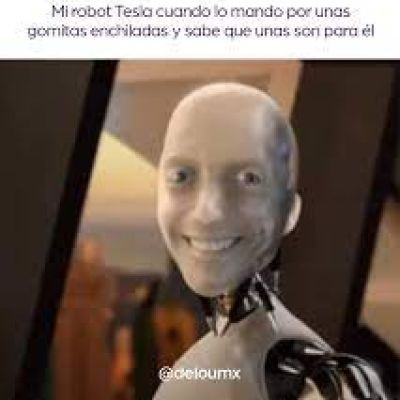5,663 Pogledi· AI
O vídeo para entender a Inteligência Artificial de verdade
Vamos investigar como o ChatGPT/Gemini realmente funciona por dentro, recriar o nosso próprio Teste de Turing e seguir uma trilha de intrigas filosóficas e científicas para responder se Inteligências Artificiais conseguem PENSAR ou NÃO.
- Esse vídeo só foi possível com o apoio da Alura! Usando o cupom INFINITAMENTE na sua matrícula você investe no seu futuro com desconto e ainda ajuda o nosso canal a continuar fazendo comunicação científica!
- Crie seu site com a IA da Hostinger com desconto pelo link http://hostinger.com.br/infinitamente + cupom INFINITAMENTE para 10% de desconto extra!
Gostou do vídeo? Então nos siga nas redes sociais!
@8nfinitamente
@adrian_valentim
@rolandinhobr
Créditos
Direção @rolandinhobr, @adrian_valentim
Pesquisa: @adrian_valentim
Roteiro: @adrian_valentim
Direção de fotografia: @pedrogargioni
Edição: @estudio42, @rolandinhobr, Andrew de Souza, Camila Fiedler B. Paraná, Dante Candal, Laura Akemi Oshiro
Arte: @estudio42, @juliagmartins, Laura Akemi Oshiro, Camila Fiedler B. Paraná.
Animação: @estudio42, Laura Akemi Oshiro, Camila Fiedler B. Paraná, @juliagmartins.
Participantes: Júlia Martins, Erica Cope, Daniela Bristot, Bruno Teixeira, Pedro Gargioni, Gabriel Waengertner
Entrevistados: Bernardo Gonçalves, Fabrício Carrraro
Referências principais:
Bishop, C. M., & Bishop, H. (2024). Deep learning: Foundations and concepts. Springer.
Prince, S. J. D. (2024). Understanding deep learning. MIT Press.
Turing, A. M. (1936). On computable numbers, with an application to the Entscheidungsproblem. Proceedings of the London Mathematical Society, 2(42), 230–265.
Turing, A. M. (1948). Intelligent machinery. National Physical Laboratory Report.
Turing, A. M. (1950). Computing machinery and intelligence. Mind, 59(236), 433–460.
Turing, A. M. (1951). Can Digital Computers Think? _BBC Radio Broadcast_, 15 May 1951.
Cooper, S. B., & van Leeuwen, J. (2013). _Alan Turing: His work and impact. Elsevier.
Copeland, J. (1993). Artificial intelligence: A philosophical introduction. Wiley-Blackwell.
Copeland, B. J. (2004). The essential Turing: Seminal writings in computing, logic, philosophy, artificial intelligence, and artificial life: Plus the secrets of Enigma. Oxford University Press.
Wolfram, S. (2023). What is ChatGPT doing ... and why does it work? Wolfram Media.
Turner, R. E. (2023). An introduction to transformers. arXiv.
Jones, C. R., & Bergen, B. K. (2024). People cannot distinguish GPT-4 from a human in a Turing test. arXiv.
Shieber, S. M. (2014). There can be no Turing-test-passing memorizing machines. _Philosophers' Imprint, 14(16), 1–13.
Gonçalves, B. (2024). Turing's test, a beautiful thought experiment. IEEE Annals of the History of Computing, 46(3), 5–18.
Penrose, R. (1989). The emperor's new mind: Concerning computers, minds, and the laws of physics. Oxford University Press.
Wooldridge, M. (2021). A brief history of artificial intelligence: What it is, where we are, and where we are going. Flatiron Books.
Mikolov, T., Chen, K., Corrado, G., & Dean, J. (2013). Efficient estimation of word representations in vector space. arXiv.
Copeland, B. J., Posy, C. J., & Shagrir, O. (Eds.). (2015). Computability: Turing, Gödel, Church, and beyond. MIT Press.
Piccinini, G. (2003). Alan Turing and the mathematical objection. Minds and Machines, 13(1), 23–48.
Moore, C., & Mertens, S. (2011). The nature of computation. Oxford University Press.
Lappin, S. (2023). Assessing the strengths and weaknesses of large language models. Journal of Logic, Language and Information, 33(1), 9–20.
Capítulos
00:00 Podem máquinas pensar?
01:29 O Jogo da Imitação
07:30 Objeções ao Jogo
17:16 Como o ChatGPT funciona
34:42 Recriando o Teste de Turing
42:17 O Nosso Teste de Turing
49:31 O Quarto Chinês
55:58 O Que Máquinas Nunca Poderão Fazer
1:03:41 Unicamente Humanos
























0 Komentari